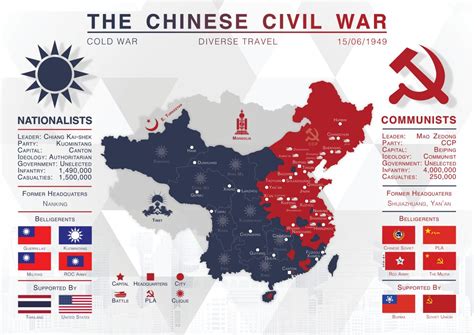From Cold War to Modern Era: 1949-2024 – A Journey Through Geopolitical Shifts
The period from 1949 to 2024 represents a pivotal era in human history, marked by profound geopolitical shifts, technological advancements, and dramatic societal changes. Beginning with the dawn of the Cold War and culminating in the complex, interconnected world of today, this journey reveals a tapestry woven with conflict, cooperation, and constant evolution.
The Cold War: A Bipolar World (1949-1991)
1949 witnessed the formation of the People's Republic of China and the Soviet Union's successful detonation of its first atomic bomb, solidifying a bipolar world order dominated by ideological rivalry. The Korean War (1950-1953) and the Vietnam War (1955-1975) served as proxy conflicts, highlighting the intense ideological struggle between communism and capitalism. This period was also characterized by a nuclear arms race, a constant threat of global annihilation, and the ever-present fear of mutually assured destruction (MAD). The Space Race between the US and USSR symbolized the technological and ideological competition, pushing the boundaries of scientific achievement.
What were the major events of the Cold War?
The major events of the Cold War are numerous and interconnected. Key moments include the Berlin Blockade (1948-1949), the Cuban Missile Crisis (1962), the Prague Spring (1968), the Soviet-Afghan War (1979-1989), and the Chernobyl disaster (1986). Each of these events significantly shaped the geopolitical landscape and fueled the ongoing tension between the two superpowers. The fall of the Berlin Wall in 1989 and the subsequent collapse of the Soviet Union in 1991 marked the symbolic and official end of this era.
The Post-Cold War Era: A Unipolar World and its Challenges (1991-2001)
The dissolution of the Soviet Union ushered in a unipolar world, with the United States emerging as the sole superpower. This period saw the rise of globalization, characterized by increased interconnectedness through trade, technology, and cultural exchange. However, this era wasn't without its challenges. The Persian Gulf War (1990-1991) demonstrated the willingness of the US to intervene militarily in global affairs. The rise of ethnic conflicts and humanitarian crises in various parts of the world highlighted the limitations of a unipolar system in addressing complex global issues.
How did globalization affect the post-Cold War world?
Globalization had a profound impact, fostering economic growth in many developing nations but also exacerbating inequality. The rapid spread of information and technology connected people globally, but it also led to concerns about cultural homogenization and the digital divide. Increased international trade fostered economic interdependence but also made nations vulnerable to global economic shocks.
The 21st Century: A Multipolar World (2001-2024)
The 21st century has witnessed a shift towards a multipolar world, with the rise of new global powers like China, India, and Russia. The September 11th attacks in 2001 marked a turning point, ushering in the "War on Terror" and leading to military interventions in Afghanistan and Iraq. The rise of transnational terrorism and cybersecurity threats posed new challenges to global security. The global financial crisis of 2008 exposed the fragility of the interconnected global economy.
What are the defining characteristics of the 21st-century geopolitical landscape?
The 21st century is defined by increasing competition between major powers, particularly the US and China. This rivalry extends across various domains, including economic, technological, and military spheres. Climate change, pandemics (like COVID-19), and rising global inequality represent significant trans-national challenges requiring international cooperation. The rise of populism and nationalism has also contributed to increased political polarization and instability in many parts of the world.
The Future: Uncertainty and Interdependence
The period from 1949 to 2024 demonstrates the dynamic and unpredictable nature of geopolitics. The future remains uncertain, characterized by a complex interplay of competing interests, technological advancements, and global challenges. The ability to navigate this complex landscape will require cooperation, diplomacy, and a recognition of shared vulnerabilities and interests. The interconnected nature of the modern world demands a shift towards collaborative solutions, acknowledging that global challenges necessitate global responses.
This overview provides a broad sweep through the significant historical events and geopolitical shifts from 1949 to 2024. Further research into specific events and periods can offer a more in-depth understanding of this crucial era in human history.

